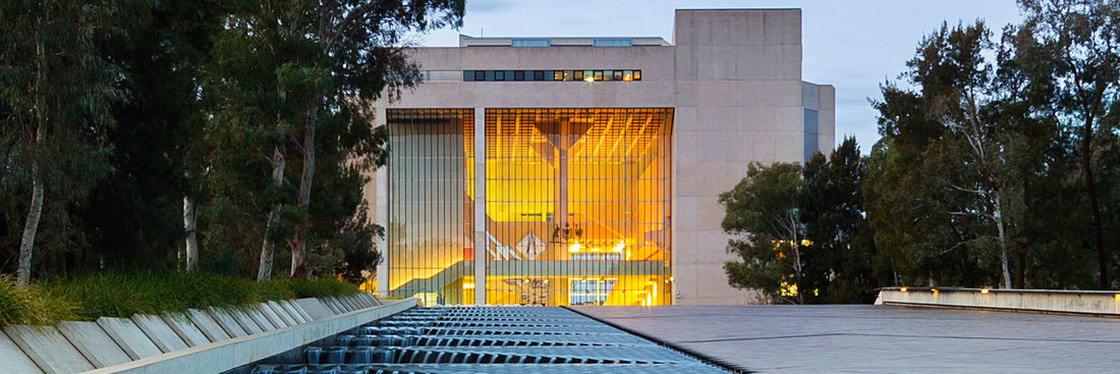Judicial appointments to each of the highest courts in the United States and Australia made for a momentous week both for court watchers and anyone understanding the singular reach of these supreme courts.
In the US, the appointment of Justice Amy Coney Barrett happened in a rush when she was confirmed by the majority-held Republican Senate ahead of Tuesday’s Presidential elections. The judicial conservative replaces her mirror opposite Justice Ruth Bader Ginsburg and will begin hearing cases when the Court next sits in November.
In Australia, the process appeared more orderly. Justice Simon Steward replaces High Court Justice Geoffrey Nettle on his retirement on 30 November 2020, and Justice Jacqueline Gleeson begins her term when Justice Virginia Bell retires on 28 February 2021.
The new justices assume roles on remarkably similar courts, with both of them final arbiters of constitutional disputes and thus of the meaning of the US and Australian Constitution. When announcing the local appointments, Prime Minister Scott Morrison was not overstating the High Court’s place as “one of the most important institutions of our democracy”.
When announcing the local appointments, Prime Minister Scott Morrison was not overstating the High Court’s place as “one of the most important institutions of our democracy”.
This is starkly demonstrated in cases just up ahead – Clive Palmer’s challenge to Western Australia’s border closing, for example, with the Court to consider freedom of interstate trade in section 92 of the Constitution – a decision bristling with impact on Australians’ daily lives. Another case looks at the constitutionality of citizenship stripping. When heard, perhaps with both new justices on the bench, the Court will deliberate on the extent to which any Commonwealth Parliament can give a minister the power to divest an Australian of their membership of the nation. One can think of no decision of more fundamental importance to what it means to be an Australian and to the security of one’s membership of Australia.

Justice Jacqueline Gleeson has been appointed to the High Court.
In both America and Australia, the new justices are protected by a central guiding principle underpinning a system of separation of powers – with their appointment comes complete independence from the legislative and executive branches; they are free to make decisions guided by the arguments put before them in the cases.
How they hear those arguments and ultimately decide which persuades them in any given case, is difficult to know in advance, and the President in the US and the Prime Minister and his cabinet in Australia, ultimately make a decision about whom they decide is ‘the best’ person at any given time, to take on this role. The President needs to get the Senate’s support; in Australia the Prime Minister makes his recommendation to the Governor-General, who in our system as a matter of convention, acts on the advice of his ministers.
Ours is a subtle political process in that the Governor-General accepts the advice of the Government which has the power to make that decision, without any transparency.
The biggest contrast in the lead up to the appointments this week is in the manner and style of appointment process. The US system is overtly political and with the Senate confirmation process, we have come to know a lot about Justice Barrett beyond her age, family and religious faith. In Australia, the appointment is not openly political in the sense that there is no grilling by the Senate over the appointment, but ours is a subtle political process in that the Governor-General accepts the advice of the Government which has the power to make that decision, without any transparency. While the Attorney-General Christian Porter stated he consulted with all State’s Attorneys-General and they had conducted their own consultations, thereafter we confront the opacity of a secret convocation and we are left watching for puffs of smoke.
With over 50 current sitting Federal Court Judges, what was it that led this government to these particular choices? Why, for instance, were Justices Gleeson and Steward chosen over, for example, the more than 60 women now sitting on the Federal Court and State Supreme Courts? The only way to ever really know is if the Attorney-General and Prime Minister, one day, explain how Cabinet came to that decision or if the Cabinet papers when released in 20 years-time provide more information.

Amy Coney Barrett replaces her mirror opposite on the Supreme Court.
In both countries the new judges all come from the Federal Courts; Barrett from the Federal Appeals Court in Chicago and Steward based in Melbourne and Gleeson based in Sydney, both from Australia’s Federal Court. All went to private schools and all had a parent who was a lawyer. Indeed, as the Attorney-General stated, after explaining each judge’s ‘impeccable’ record, “it is not possible to appoint Justice Gleeson without noting that she is the eldest daughter of the former Chief Justice Murray Gleeson”. While he commented this may be unique in Commonwealth countries, with a daughter appointed onto a Court on which her father sat, it is not unique to have had family legacies in Australian Courts with other judicial families; the Street family in NSW, coming to mind, as an example.
The environment in which one grows up and the networks one develops, impacts on the opportunities that then flow.
The optics of the newest woman justice having had a father on the Court, with her fellow Justice Michelle Gordon replacing her husband on his retirement from the bench does not speak to the strength of each of these woman’s own records, but it sits within a system where the environment in which one grows up and the networks one develops, impacts on the opportunities that then flow.
In Justice Steward’s welcome speech on his appointment to the Federal Court just over two years ago, Senator George Brandis, shared “a family legend that when you were about 12 on a visit to the city with your father you looked up at the large towering Supreme Court of Victoria, then also the High Court building, and exclaimed, ‘This is where I want to be’.” In my oral history work and research around trailblazing women lawyers, it is not uncommon for the first women lawyers to have come from legal families, where private school educations and knowledge of the system itself, provides opportunity. These networks for men and women institutionally privilege certain groups where other individuals with ‘impeccable’ records in a broader sense, do not get to contribute and impact on the judgements that affect us all.
Many will ask, why the Cabinet did not venture to choose any of the Federal Court justices based in South Australia or Tasmania or any of the Supreme Court justices in those states or the Northern Territory or ACT, which never has had a resident appointed to the Court? In a Federal system, in which the Parliament is mandated to have representation from around the country, and in which the Court will hear matters impacting on our Federal balance, the experience of those living in all jurisdictions is relevant to the strength of the Court at any given time.
High Court judges, like US Supreme Court justices, hold great power and responsibility in more lasting senses than the AFR’s list of ‘The 10 most powerful people in Australia in 2020.’ The AFR list had nine men and one woman – a proportion not dissimilar to the High Court’s earlier ratio of men to women for most of its existence. With a ratio now of four men and three women, we might even see the day, in October 2022 when Justice Keane turns 70, where we witness a move to four women and three men on the Court.

Justice Virginia Bell will retire in February 2021.
As of September 2019, women make up 50 per cent of the Senate so perhaps there would be some advantages in involving the Senate? Indeed, if the Senate had been involved throughout Australia’s history in the appointment there might even have been a woman Justice from South Australia, Tasmania, the ACT or the Northern Territory, with impeccable credentials, to join our Court’s mix.
But we should actually direct our gaze away from the fanfare in America, to the United Kingdom where we see the Judicial Appointments Commission set up in 2006. It is not perfect and has been reviewed, but it acts as an independent commission selecting candidates for judicial office “on merit, through fair and open competition, from the widest range of eligible candidates”.
Our new justices may well have been appointed through such a process, but a more transparent system would certainly break the politics underpinning our current system. Confidence in one of our most important institutions would certainly be enhanced, the talent pool for prospective justices would be enlarged and Justices will have been seen to have earned their places after running on a level playing field in an open race.
This article first appeared in the Australian Financial Review. You can view the original article here.
Kim Rubenstein is a Professor in the Faculty of Business Government and Law at the University of Canberra, which has supported the production of the new podcast series It’s not just the vibe, It’s the Constitution. She is a Fellow of the Australian Academy of Law and the Academy of Social Sciences in Australia.





